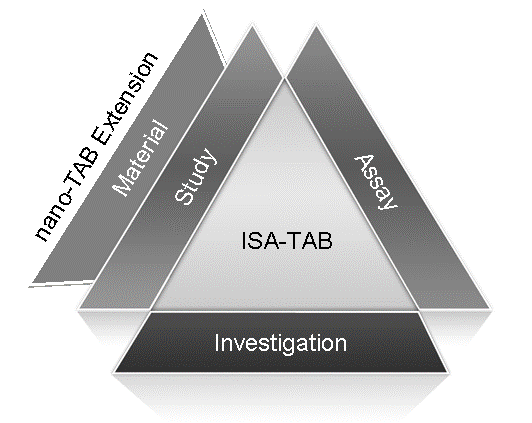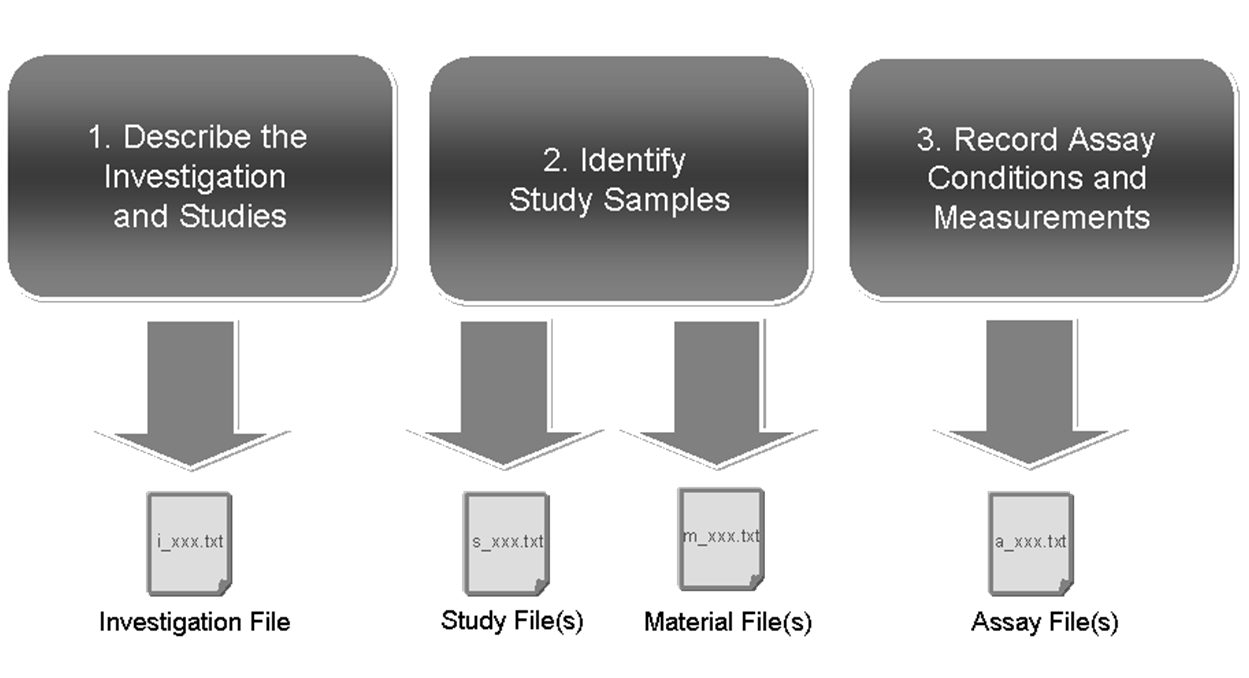 |
Page History
| Section | ||||||||||||||||||||||||||||
|---|---|---|---|---|---|---|---|---|---|---|---|---|---|---|---|---|---|---|---|---|---|---|---|---|---|---|---|---|
|
...
FIG 1. ISA-TAB-Nano File Structure
Constructing a ISA-TAB-Nano File
...
FIG 2. ISA-TAB-Nano File Development Process
| Wiki Markup |
|---|
Once theISA-TAB-Nano files have been created, the files can be validated and submitted into nanotechnology resources that support the ISA-TAB-Nano specification. It is anticipated that validation of the files may occur via a validation service that leverages a modified version of the ISA-TAB validator \[[http://isatab.sourceforge.net/validator.html]\]. It is also anticipated that nanotechnology resources like caNanoLab ([https://cananolab.nci.nih.gov/caNanoLab/]), the Nanomaterial-Biological Interactions (NBI) knowledgebase ([http://nbi.oregonstate.edu/]), and other resources will provide facilities for importing/exporting ISA-TAB-Nano files as the ISA-TAB-Nano specification evolves. |

